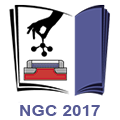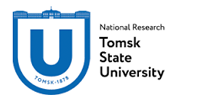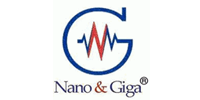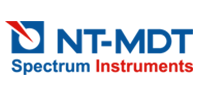Nano and Giga Challenges in Electronics, Photonics and Renewable Energy
Current Trends in Radiophysics
Symposium and Summer School (Tutorial Lectures)
Tomsk, Russia, September 18-22, 2017
nanoandgiga.com/ngc2017 and apr.tsu.ru
Commentary Stephen Goodnick
Current Trends in Nanotechnology for Information and Energy Transformation and Storage
To read Goodnick's commentary in Russian published in STRF.RU click here
Nanoelectronics and materials: We are reaching the ends of Moore's law, where scaling of CMOS dimensions is reaching its limits, and diminishing returns with further scaling. Already transistors have become nonplanar and are more nanowires than lateral devices (for example FINFETs are increasingly being used by companies like Intel). There is a trend of moving away from Si as the active layer (although the substrate is still Si) with SiGe and III-V materials being increasingly used. Graphene was a promising material, but for transistors used for digital logic, the lack of bandgap makes it a poor candidate. However, there is a lot of interest the past few years in other 2D materials, like transition metal dicalchogenides (MoS2 for example), black phosphorous (somewhat similar to graphene) and others.
To date, the transport properties have not been so good (much lower mobilities than traditional transistor materials like Si and III-V compounds). A hot topic is topological insulators, materials that are insulators in the bulk, but because of symmetry properties, have a graphene like bandstructure on the surface, which theoretically has low scattering and high mobility (yet to be convincingly demonstrated). Another issue is power dissipation and scaling, as the threshold voltage is made smaller to reduce the power, the off current is becoming too large, and static power dissipation is now starting to dominate power consumption.
There is still a lot of work on devices that have a low subthreshold current slope (the lower this metric the steeper the shutoff with voltage), and tunnel FETs are an active topic. All these material advances in any case only by a couple of generations of scaling at best when used a transistors which are basically charge control devices, so just pushing off the inevitable. Two routes are being pursued, one is neuromorphic computing, that is traditional transistors but parallel analog computing, like neural networks. A second is spintronics, contolling the electron spin as a logic or information containing state, for both storage (the MMRAM that Motorola spun off years ago as everspin) and now for logic. Spin torque oscillators and devices are being researched.
Nanophotonics: Emerging interest in the Terahertz regime which is difficult to reach with either optoelectronic or electronic devices. Technologies like quantum cascade laser are nanostructured devices that have demonstrated operation in the near THz regime. Nanoplasmonics and metamaterials are also continuing to be important for many optical and EM applications.
Nanoenergy: Will continue to be innovations in photovoltaic devices using nanostructured systems for improved light collection. Storage technologies like batteries and fuel cells are using nanoengineered materials for anode and cathodes to increase the effective surface area and their catalytic properties.
Nanomedicine: Present day advances are laying the groundwork for designing future innovative diagnostic applications and novel therapeutic capabilities as well as nano-enabled material for advancing cell/molecular biology and tissue engineering.














